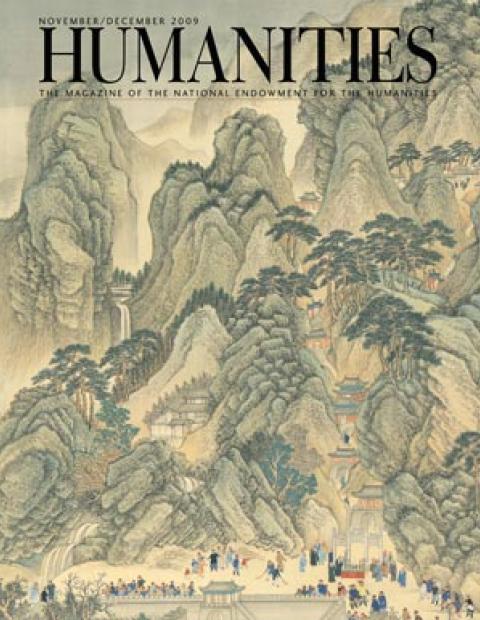From Coyote Country: Fictions of the Canadian West, wherein Duke research professor in Canadian studies Arnold E. Davidson sketches the chameleon-like exploits of two rare souls, one American, the other British, who lit out for the territory, shedding one identity while successfully assuming another. Professor Davidson was a recipient of an NEH fellowship for college teachers.
Early in the twentieth century a young “colored” man from Winston-Salem, North Carolina, went west to Southern Alberta and reinvented himself as Buffalo Child Long Lance, a chief of the Blackfoot. In that capacity he returned to the United States and gained considerable renown, associating with the rich and famous in Hollywood and New York, producing and starring in one of the first movies to treat Natives seriously, writing and speaking on behalf of Native causes. It is an odd success and hard to evaluate. His achievement is undeniable but so is his fraud. His fraud is also understandable, especially when we consider that he was of mixed white, Native, and perhaps black ancestry, yet, for him, what signified mostly in the United States of his time was black. His family denied being part Negro but was still officially deemed colored. He himself departed from West Point (where he had been admitted as a full-blooded Cherokee) when an army investigation threatened to expose his passing. In this context the Freudian implications of the name he assumed are particularly suggestive. “Long Lance” is a definite claiming of a potency that America preferred to deny black men. Yet natives early recognized that Long Lance could not really act or speak for them, for he simply did not know their ways. Disputing a false definition of the “Negro,” he falsely inscribed himself as a Native, as simply another (although preferred) “Other.”
It is tempting to go west and play Indian. Numerous people have done so and most without the impetus of racism. Archibald Stansfeld Belaney, for example, although born and raised in Hastings, England, could come to Canada to become Grey Owl, ostensibly a half Apache adopted by the Ojibway and taught by them the ways of the woods. On two book tours back in England, in braids, buckskin, and wampum belt, he could pass as Canada’s most famous Indian. In that false guise he also became one of Canada’s more popular writers and greatest conservationists, two successes that went together. After Grey Owl, encouraged by Anahareo, his Iroquois “wife” (Belaney was legally married to someone else), adopted two orphaned beaver kittens, he gave up trapping to work on beaver conservation in western Canada and to write movingly about these “little people” in books such as his Pilgrims of the Wild (1935). He thereby fostered “environmental consciousness” to the degree that, “in the pantheon” of nature writers, one recent commentator has claimed, “Grey Owl belongs with Henry David Thoreau, John Muir, Aldo Leopold, and Rachel Carson.” A very real accomplishment for a fake Indian.
© Duke University Press, 1994. Reprinted with permission.

